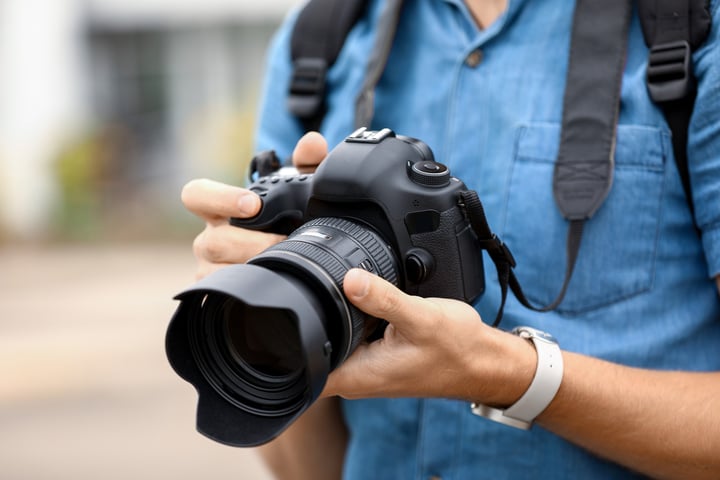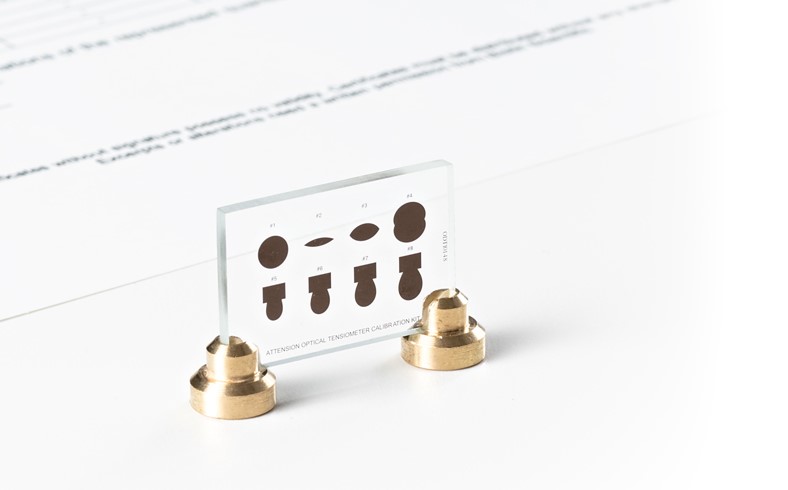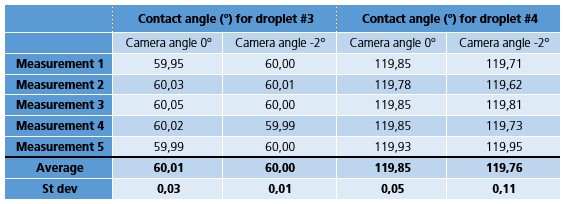
Contact angle measurements are a fundamental tool in understanding wettability of solid surfaces. They find applications in various fields, from materials science to biology. The contact angle is measured by placing a drop on the sample surface. To determine the angle, a baseline between the sample and the drop, needs to be detected. One of the major factors limiting the automated analysis of contact angles is the accurate assignment of the baseline.
Contact angle is defined as the angle formed by a liquid at the three-phase boundary point where a liquid, gas, and solid intersect. A baseline is a horizontal line representing the contact line between the liquid droplet and the solid surface, and it plays an essential role in contact angle analysis. The baseline is often set manually, requiring significant experience and know-how by the user. While advanced systems now offer automated baseline recognition, they are highly dependent on the visibility of the baseline in the image. The visibility of the baseline is often compromised when dealing with challenging samples, such rough surfaces, fabrics, and dark materials.
One effective solution to enhance the baseline visibility is tilting the camera slightly downwards. By doing so, the baseline becomes more distinct, facilitating precise positioning. In contact angle measurements, the camera can be safely tilted approximately two degrees without affecting the contact angle results. Too excessive tilting should be avoided to avoid a top-down view of the droplet, which can result in incorrect contact angle results.

For pendant drop measurements, the camera angle should always be zero. Tilting the camera can affect the results as the perspective of the pendant drop changes, thus changing the drop’s shape. The shape of the drop is an essential part of the analysis in pendant drop measurements.
When measuring the same droplet with different camera angles, it may appear that the camera angle influences the contact angle results for the droplet.  The slight time delay between the consecutive measurements taken with different camera angles allows the droplet sufficient time to evaporate and spread across the sample surface, thus altering the contact angle. If the contact angle is measured using a verification pack consisting of a glass slide with drop pictures with known contact angle and surface tension values, it can be shown that tilting the camera by two degrees does not impact the contact angle measurement. However, it can lead even to a 2% increase in the recorded surface tension values.
The slight time delay between the consecutive measurements taken with different camera angles allows the droplet sufficient time to evaporate and spread across the sample surface, thus altering the contact angle. If the contact angle is measured using a verification pack consisting of a glass slide with drop pictures with known contact angle and surface tension values, it can be shown that tilting the camera by two degrees does not impact the contact angle measurement. However, it can lead even to a 2% increase in the recorded surface tension values.

The accurate assignment of the baseline is a crucial step in contact angle analysis. To overcome challenges posed by difficult samples, tilting the camera slightly downwards can enhance baseline visibility and, consequently, improve the analysis of the contact angles
Discover why contact angle is essential for adhesion, coatings, and quality control. Learn how surface wettability impacts product performance.
Discover why PFAS-free coatings are needed, the challenges they present, and key strategies for developing high-performance alternatives.
At the heart of droplet formation are two key molecular forces: cohesion and adhesion.
Contact angle measurements provide a golden standard for evaluation of surface properties for quality control.
Contact angle is the angle a droplet forms in contact with a solid surface. Thermodynamically, it is a balance between cohesive and adhesive forces.
This blog post discusses the importance of adhesion in the lithography process and how to predict adhesion with contact angle measurements.
HMDS is used to render the surface of silicon more hydrophobic and thus to match better with the chemistry of the photoresist.
This blog post explains the concept of RCA cleaning and it's relation to contact angle.
Contact angle measurements can be used to evaluate the cleanliness of silicon wafers.
Henni works as a product specialist at Biolin Scientific. She has a master degree on biosystems and biomaterials engineering from Aalto University. She is an expert on contact angle and surface tension measurements.
